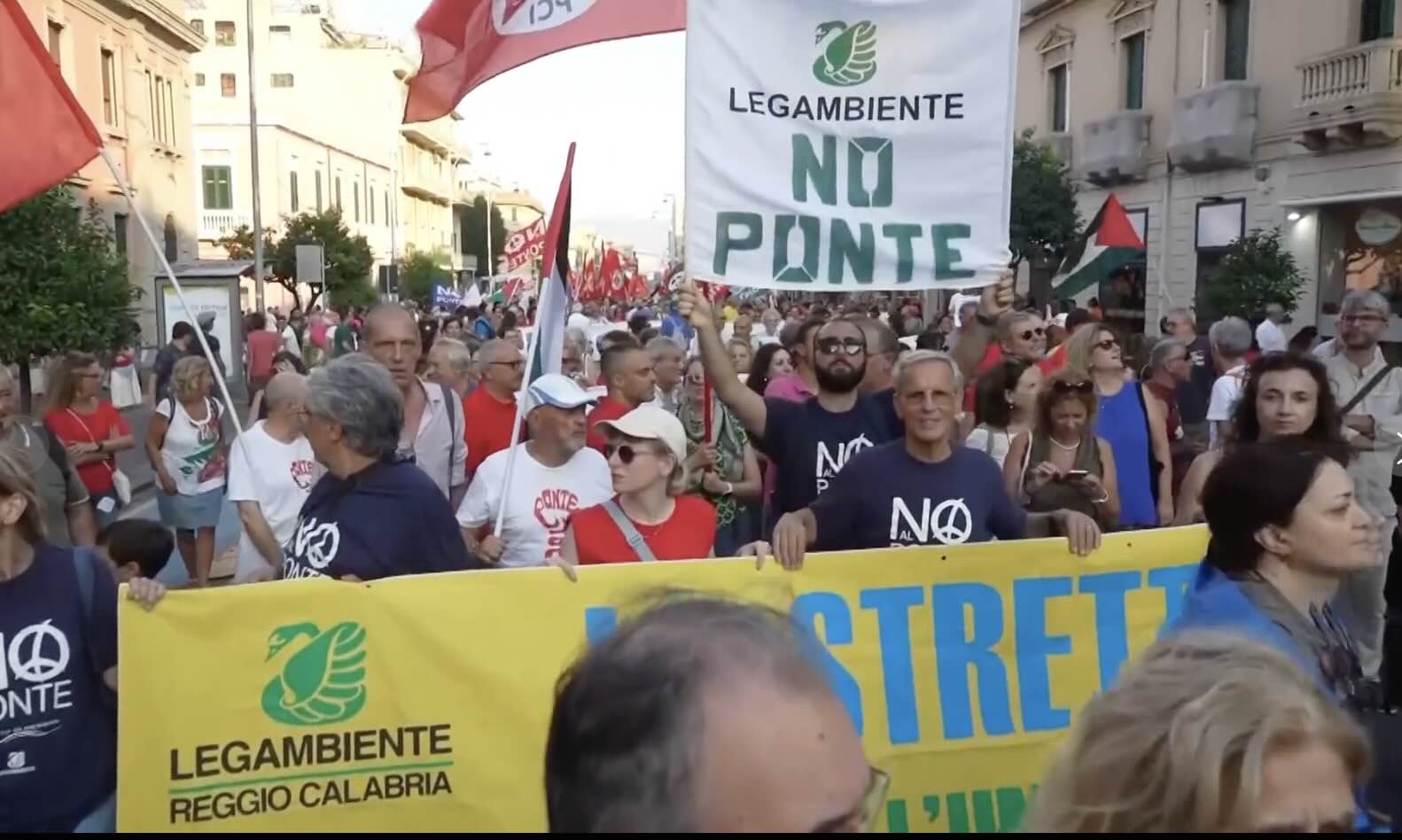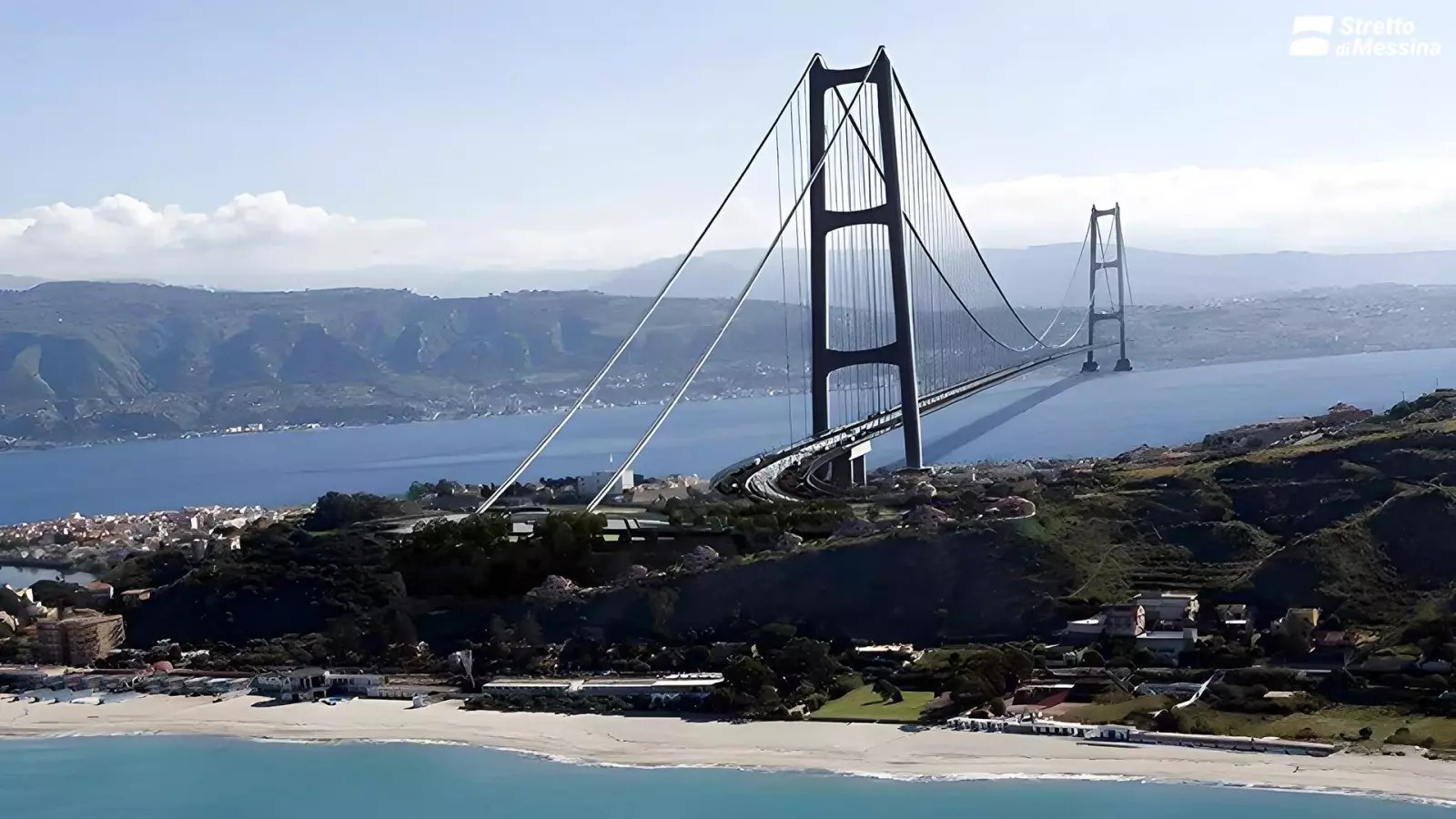Organisers said around 10,000 people took part. Demonstrators cited the project’s scale, seismic risk in the strait, environmental impact, and concerns over potential mafia interference. They also objected to expropriations affecting about 500 families.
The protest followed a key procedural step earlier in the week. On 6 August, Italy’s Interministerial Committee for Economic Planning and Sustainable Development (CIPESS) approved the final design for the bridge, moving the long-discussed scheme into its implementation phase. The government’s account of the decision puts the total public cost at approximately €13.5 billion, with funding allocated in recent budgets. Publication of the decision in the Official Gazette will trigger the effectiveness of the approvals and related contract addendum.
According to the concessionaire and contractors, the crossing is planned as a single-span suspension bridge with an overall deck length of 3,666 metres and a central suspended span of 3,300 metres. If built to this specification, it would surpass Turkey’s Çanakkale bridge to become the longest suspension bridge worldwide. The design foresees three road lanes in each direction, two railway tracks and service lanes on a deck about 60 metres wide, with a navigational clearance of roughly 70–72 metres. Towers would reach 399 metres, and the structure is being designed for seismic activity and strong winds. Project documents indicate capacity of up to 6,000 vehicles per hour and about 200 trains per day.
The timetable published by officials envisages preliminary activities — including site surveys and enabling works — starting as early as late September or October, subject to the Court of Audit’s sign-off. Major construction is scheduled to begin in 2026, with completion targeted between 2032 and 2033. The contracting side says early works will include associated road and rail connections on both shores, integrated with the Scandinavian–Mediterranean corridor of the Trans-European Transport Network (TEN-T).
Matteo Salvini, Deputy Prime Minister and Transport Minister, has called the scheme “the biggest infrastructure project in the West,” arguing it would create up to 120,000 jobs annually during construction and catalyse growth in southern Italy. Government communications also describe the link as strategic for national mobility and logistics. The general contractor is the Eurolink consortium led by Italy’s Webuild, alongside partners including Spain’s Sacyr and Japan’s IHI.
Opponents dispute the economic case and raise risk-based objections. Environmental organisations have filed complaints with EU authorities, citing migratory bird routes and other sensitivities in the strait. Academics and campaigners warn about seismic exposure in a region struck by the 1908 Messina earthquake, and about the risk of criminal infiltration into supply chains and subcontracting. Protesters in Messina marched under “No Ponte” banners, with organisers pledging further actions as early works approach.

Protesters in Messina marched under “No Ponte” banners
Governance and oversight have been central to the debate. The project remains subject to Italy’s anti-mafia legislation applicable to major public works, following interventions to ensure standard controls rather than exceptional arrangements. The government has also discussed classifying the bridge as dual-use security infrastructure. Supporters say such a designation could allow part of the outlay to be counted towards defence-related spending commitments; critics argue this would require additional assessments and could make the structure a target.
The Messina crossing has been proposed, approved, and cancelled at various times since Italy first sought bids in 1969. The scheme was shelved during past austerity rounds and revived by the current administration in 2023. The decisive move this month — CIPESS approval of the definitive design — represents the furthest progression to date. After gazettal and audit clearance, expropriation procedures, archaeology, and geotechnical investigations are due to follow, alongside procurement for complementary works in Calabria and Sicily.
Saturday’s march indicates organised opposition remains strong as formalities conclude and ground activity nears. The project’s next milestones include publication of the CIPESS resolution, audit clearance, and commencement of preliminary works. The government and Eurolink consortium state they are prepared to proceed, while environmental groups and local committees signal they will continue legal and public campaigns.
Post Views: 980
